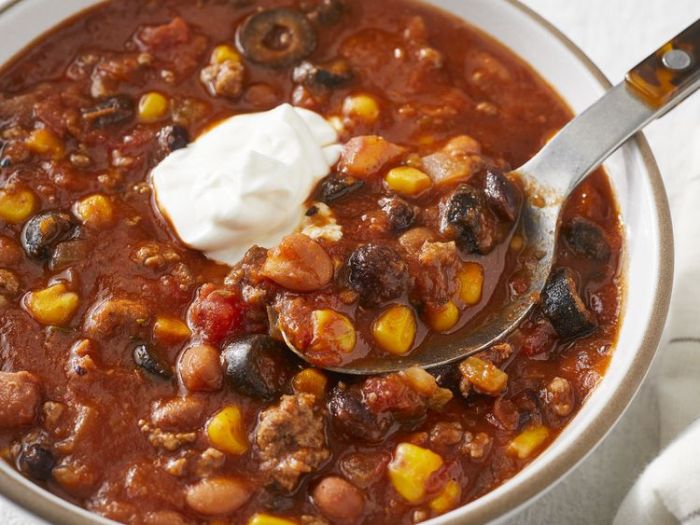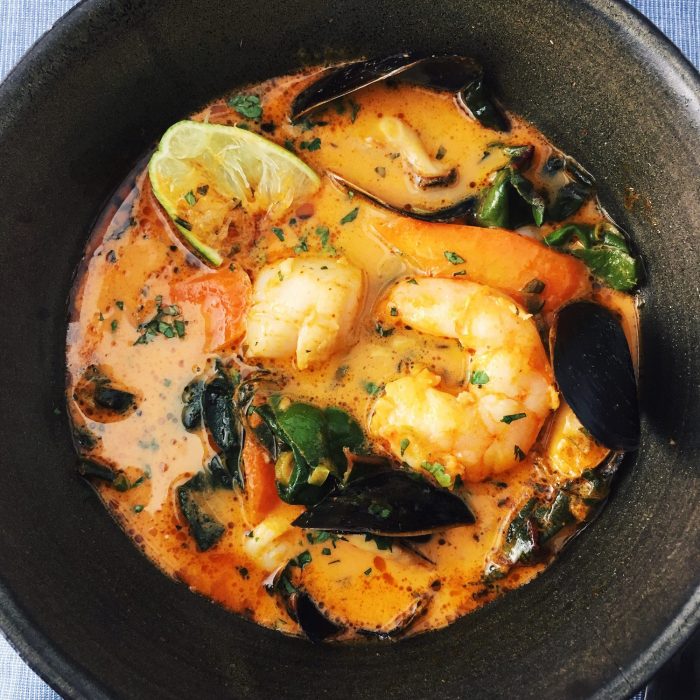Pork Chop Soup Recipes: A Culinary Exploration
Pork chop soup is a comforting and versatile dish, adaptable to various culinary traditions and dietary needs. This article delves into the diverse world of pork chop soup recipes, exploring different styles, ingredients, cooking techniques, and serving suggestions. We’ll also address common issues and provide solutions for achieving a perfectly flavorful and tender soup.
Recipe Variations: Pork Chop Soup
Five distinct pork chop soup recipes showcase the versatility of this classic dish, each reflecting a unique culinary style.
- Asian-Style Pork Chop Soup: This recipe incorporates soy sauce, ginger, garlic, and shiitake mushrooms for a savory umami flavor. Bone-in pork chops add richness to the broth. Preparation involves browning the chops, then simmering them in a flavorful broth with the aromatics and mushrooms. Serve with chopped green onions.
- Southern US Pork Chop Soup: This hearty recipe features smoky andouille sausage, potatoes, carrots, and celery for a rustic Southern flair. The pork chops are simmered with these vegetables in a rich broth seasoned with thyme, bay leaf, and black pepper. A touch of cornbread crumbs adds texture.
- Mexican-Style Pork Chop Soup (Caldo de Costillas): This vibrant soup features tender pork chops, hominy, fire-roasted tomatoes, and a blend of Mexican spices like cumin, chili powder, and oregano. The broth is infused with the smoky flavors of the roasted tomatoes and spices. Garnish with cilantro and lime wedges.
- European-Style Pork Chop Soup: This recipe uses bone-in pork chops, potatoes, carrots, and pearl onions in a clear broth seasoned with herbs like parsley, thyme, and bay leaf. A touch of white wine adds depth and complexity to the flavor. Serve with crusty bread.
- Mediterranean Pork Chop Soup: This lighter soup incorporates lemon, oregano, and a variety of vegetables like zucchini, bell peppers, and tomatoes. The pork chops are simmered in a light broth with these fresh ingredients. A drizzle of olive oil adds richness. Serve with a sprinkle of feta cheese.
| Recipe Style | Key Ingredients | Cooking Time (approx.) | Flavor Profile |
|---|---|---|---|
| Asian | Pork chops, soy sauce, ginger, garlic, shiitake mushrooms | 1.5-2 hours | Savory, umami |
| Southern US | Pork chops, andouille sausage, potatoes, carrots, celery, thyme | 1.5-2 hours | Smoky, hearty |
| Mexican | Pork chops, hominy, fire-roasted tomatoes, cumin, chili powder | 1-1.5 hours | Spicy, vibrant |
| European | Pork chops, potatoes, carrots, pearl onions, parsley, thyme | 1.5-2 hours | Herbaceous, savory |
| Mediterranean | Pork chops, zucchini, bell peppers, tomatoes, lemon, oregano | 1-1.5 hours | Light, fresh, herbaceous |
Ingredient Exploration: Pork and Broth

Source: pinchstatic.com
Selecting the right pork and crafting a flavorful broth are crucial for a delicious pork chop soup.
Bone-in pork chops, such as country-style ribs or shoulder chops, are ideal for adding richness and depth of flavor to the broth. Leaner cuts like loin chops can also be used, but may result in a less flavorful soup. The bone marrow contributes significantly to the broth’s richness.
- Method 1: Basic Broth: This simple method involves simmering pork bones and scraps with water and basic aromatics. It’s easy but may lack depth of flavor.
- Method 2: Roasted Bone Broth: Roasting the bones before simmering intensifies the flavor. This method requires more time but yields a richer, more complex broth.
- Method 3: Combination Broth: This method combines both roasted bones and leftover pork scraps for a rich and deeply flavorful broth.
Aromatics play a significant role in enhancing the soup’s overall taste.
- Onions provide a sweet base note.
- Garlic adds pungent warmth.
- Ginger offers a spicy and slightly sweet flavor.
- Celery adds a subtle earthiness.
- Carrots contribute sweetness and color.
Cooking Techniques and Methods: Simmering and Browning, Pork chop soup recipes
Proper browning and simmering techniques are essential for achieving tender pork and a flavorful broth.
Browning the pork chops before adding them to the soup develops a rich crust and enhances the overall flavor. This process creates Maillard reaction products, contributing to the soup’s depth of taste.
- Gentle Simmering: This technique involves maintaining a low, steady simmer (around 180-200°F) for an extended period. This ensures the pork becomes tender and the flavors meld.
- Rapid Simmering: This method involves a slightly higher simmer (around 205-212°F) for a shorter cooking time. This is suitable for thinner pork chops or when time is limited, but may result in slightly less tender meat.
Slow cooking (in a crockpot or oven) yields incredibly tender pork, while pressure cooking significantly reduces cooking time while maintaining tenderness. Pressure cooking may result in a slightly less nuanced flavor compared to slow cooking.
Serving Suggestions and Garnishes: Enhancing the Dish
Complementing the soup with appropriate side dishes and garnishes elevates the dining experience.
- Cornbread
- Garlic bread
- Simple green salad
- Roasted vegetables
- Fruit salad (for a contrasting flavor)
Visually appealing garnishes add a touch of elegance.
- Fresh Herbs: Chopped parsley, cilantro, or chives add color and freshness. Sprinkle generously over the soup.
- Lemon Wedges: A squeeze of fresh lemon brightens the flavors and adds a touch of acidity. Serve alongside the soup for individual preference.
- Crispy Fried Onions: These add a delightful textural contrast. Prepare by thinly slicing onions, then frying them until golden brown and crispy.
A flavorful dipping sauce adds another dimension. A simple dipping sauce can be made with a combination of soy sauce, rice vinegar, sesame oil, and a touch of chili garlic sauce.
Dietary Adaptations: Variations for Specific Diets
Pork chop soup can be adapted to suit various dietary needs.
| Dietary Adaptation | Ingredient Substitutions | Cooking Adjustments | Nutritional Considerations |
|---|---|---|---|
| Low-Sodium | Reduce or eliminate added salt; use herbs and spices for flavor | No adjustments needed | Lower sodium intake, but may require careful seasoning |
| Low-Carb | Reduce or eliminate starchy vegetables (potatoes, carrots); increase leafy greens | May require shorter cooking time | Lower carbohydrate intake, but may lack some heartiness |
| Vegetarian (Meat Substitute) | Substitute pork chops with hearty mushrooms, firm tofu, or lentils | May require additional broth for consistency | Lower protein content compared to meat-based versions; good source of plant-based protein |
Troubleshooting Common Issues: Problem-Solving

Source: inspiredtaste.net
Addressing common issues can prevent culinary disappointments.
- Overcooked Pork: Prevent this by using a meat thermometer and ensuring the pork reaches an internal temperature of 145°F. If overcooked, shred the pork and add it back to the soup to incorporate into the broth.
- Bland Broth: This can be remedied by adding more aromatics, herbs, or a splash of acid (lemon juice or vinegar). A dash of soy sauce or Worcestershire sauce can also boost the flavor.
- Unevenly Cooked Vegetables: Ensure vegetables are cut into similar sizes for even cooking. Add harder vegetables earlier in the cooking process.
Q&A
Can I use frozen pork chops?
Yes, but ensure they are fully thawed before browning to prevent uneven cooking. Pat them dry before browning for better results.
How long can I store leftover pork chop soup?
Store leftover soup in an airtight container in the refrigerator for up to 3-4 days. Reheat gently on the stovetop or in the microwave.
Many delicious pork chop soup recipes exist, offering a comforting and flavorful meal. If you’re looking for a quick and easy way to elevate your pork chops, consider using a pre-made mix; a great option is found in this pork chop recipe with onion soup mix , which could easily be adapted for a soup base. The savory depth of the onion soup mix translates well into a hearty broth, making it a convenient shortcut for building fantastic pork chop soup recipes.
What can I do if my soup is too salty?
Add a peeled and quartered potato to the soup while simmering. The potato will absorb some of the excess salt. Alternatively, add a splash of cream or milk to balance the flavors.
Can I use bone-in pork chops?
Yes, bone-in pork chops will add extra flavor to the broth. Just be sure to adjust cooking time as needed, as bone-in chops generally require longer cooking times.


